5 Can’t-Miss Art and Design Exhibitions to Catch in a City Near You This April 👀
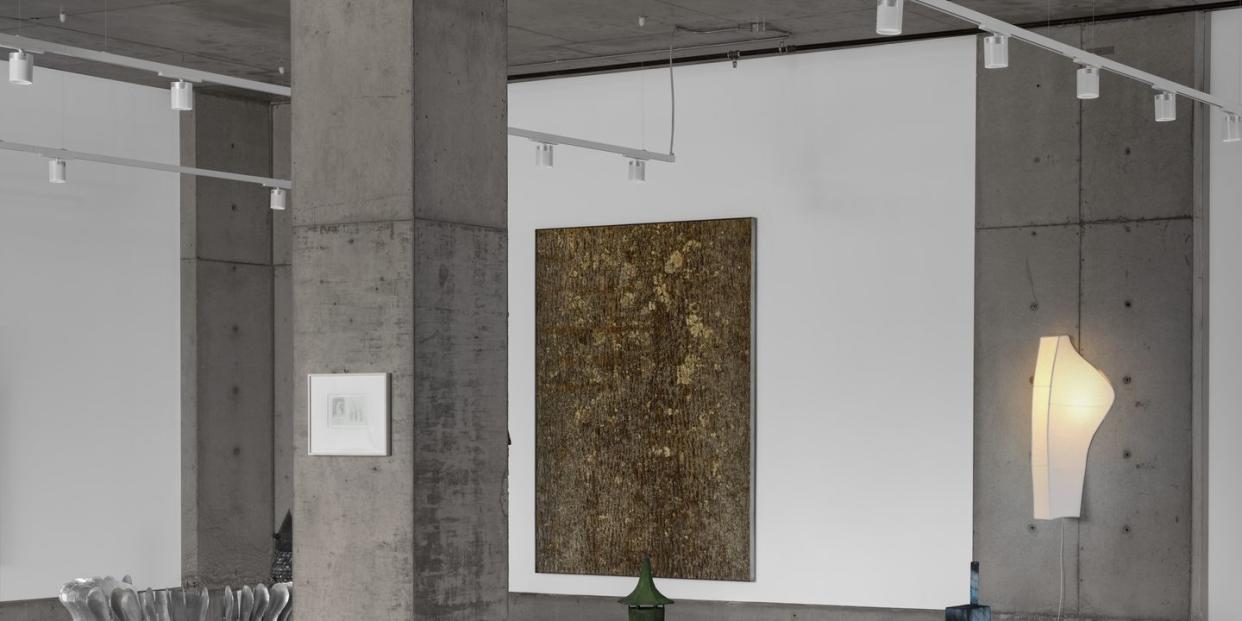
Birds chirp and we reconsider every aspect of our lives. That’s the beauty and challenge of spring. This season also brings new objects, ideas, and materials for us to consider—abstractly or in real life. Below we have outlined our favorite shows opening this month all over the world, surveying the visual world from several different points of view. This April you can catch a glimpse of cutting-edge contemporary design within the confines of a Renaissance-era estate and, in another, banqueting and dining culture from that same period dissected and celebrated. Elsewhere a new, impish spin is put on terrazzo, and art and design are intentionally muddled for the benefit of New York’s local community. Take a look below, and we’ll see you there!
“Staging the Table in Europe 1500–1800” at Bard Graduate Center
New York City
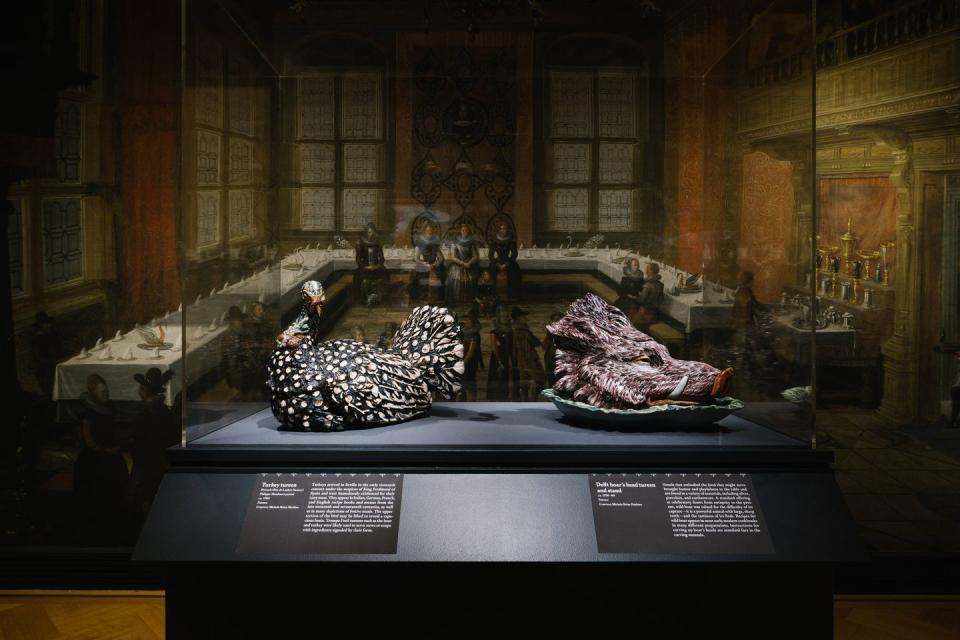
Oh, how we wish the only times we saw birds fly out of pies wasn’t just on Game of Thrones. Centuries ago, a living element to your meal was par for the course—that is if you had the wealth to sustain such pomp. Bard Graduate Center’s new show, “Staging the Table in Europe,” lays out the manifold ways in which entertaining at home really was entertaining. In the center’s historic townhouse setting, artistry of the table is put on full display. Like a Laila Gohar of early modern Europe, skilled servants referenced manuals (of which several 16th- and 17th-century examples anchor the show) advising on napkin folding, the preparation and presentation of intricate dishes, and the careful carving of meats and fruits. Along with these reference materials are the objects—knives so pretty you would welcome the blade, forks of mother-of-pearl and carved ivory, dinner napkins depicting hunters and elegant steeds, soup tureens in the shape of boars’ heads, and even a damask tablecloth commemorating the English King George I—that together created the fleeting beauty of an evening meal, with visual aids in the form of 16th- and 17th-century paintings and prints showing banquets well underway. Another show like this has not opened in New York for many years. It’s impossibly special. On view through July 9. —Camille Okhio
“Mirror Mirror” at Chatsworth House and Garden
Derbyshire, England
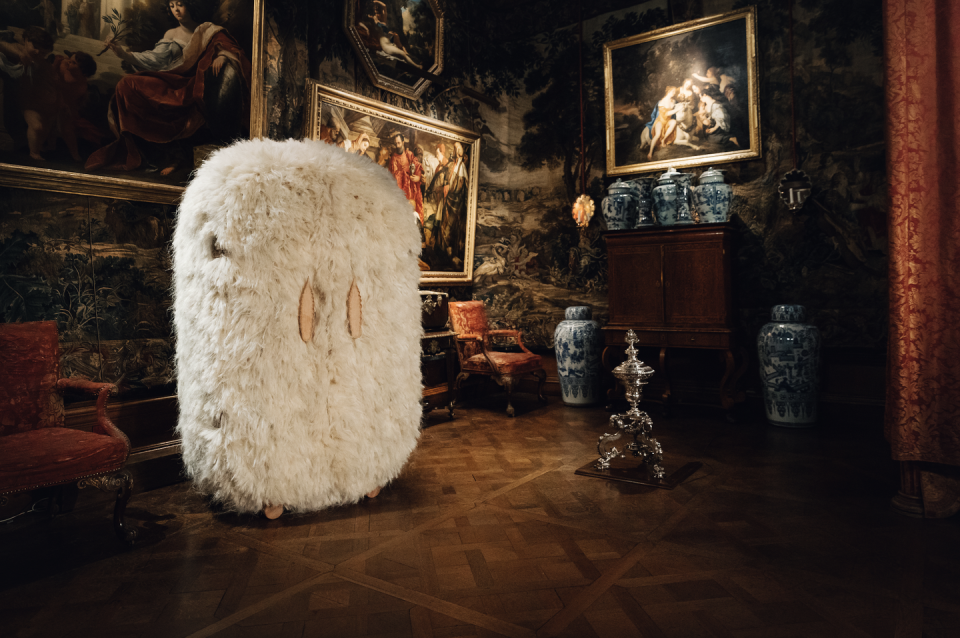
In a seamless blend of new and old design, Friedman Benda has partnered with the Chatsworth Estate in England, juxtaposing 16th-century architecture with the sculptural, experimental shapes of contemporary furniture. Dubbed “Mirror Mirror,” the exhibition serves as a reflection on Chatsworth, which is littered with artworks from the likes of Rembrandt, van Dyck, Reynolds, and many others. As part of the show, monolithic Wendell Castle works oversee the stately gardens, and fluid ceramics by Andile Dyalvane stand alongside ancient Egyptian and Roman sculptures. One of the most playful and unexpected moments comes via a fuzzy white cabinet by Fernando Laposse, which occupies the otherwise reserved state bedchamber. On view through October 1. —Helena Madden
“Local Objects” at International Objects
Brooklyn
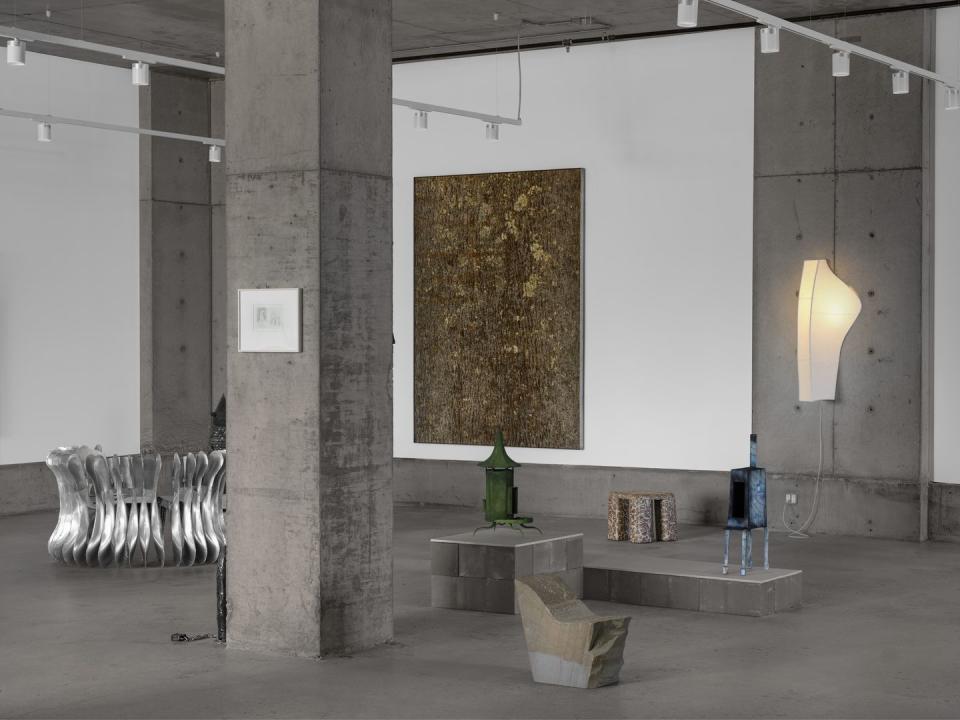
We’re in the business of objects here at Elle Decor, but not just any old tchotchke makes the cut. Good design requires a hearty balance of intention and invention. At the inaugural exhibition of new gallery International Objects, well over 100 objects of exceptional quality and varied material showcase how fragile the line between art and design is. Function blurs when familiar forms preclude use—like cushioned chairs that don’t sink when you sit in them (care of Raul De Lara) and bed headboards that need an energy source to function (see Philip Hinge’s Roy and Girl Cat). The show, entitled appropriately Local Objects, also boasts pieces that reframe the most mundane actions in traditionally luxurious materials and contexts. Sujung Chang’s Step Stool of alabaster seems much too precious to hold weight, though of course it’s more fit for its task than its flimsy plywood brethren. And of the nearly 100 artists who are all either from or currently living in New York, every single one has a trick up their sleeve. Shaina Tabak makes wood look like water, and Patrick Carlin Mohundro’s Sacral Seat elevates the bathroom break to a near religious experience. The show celebrates freewheeling fancy just as it honors rigidity and repetition. This curatorial revelation is on view through May 28. —C.O.
“A Forged Spider’s Wed” at Unit 17
Vancouver, British Columbia
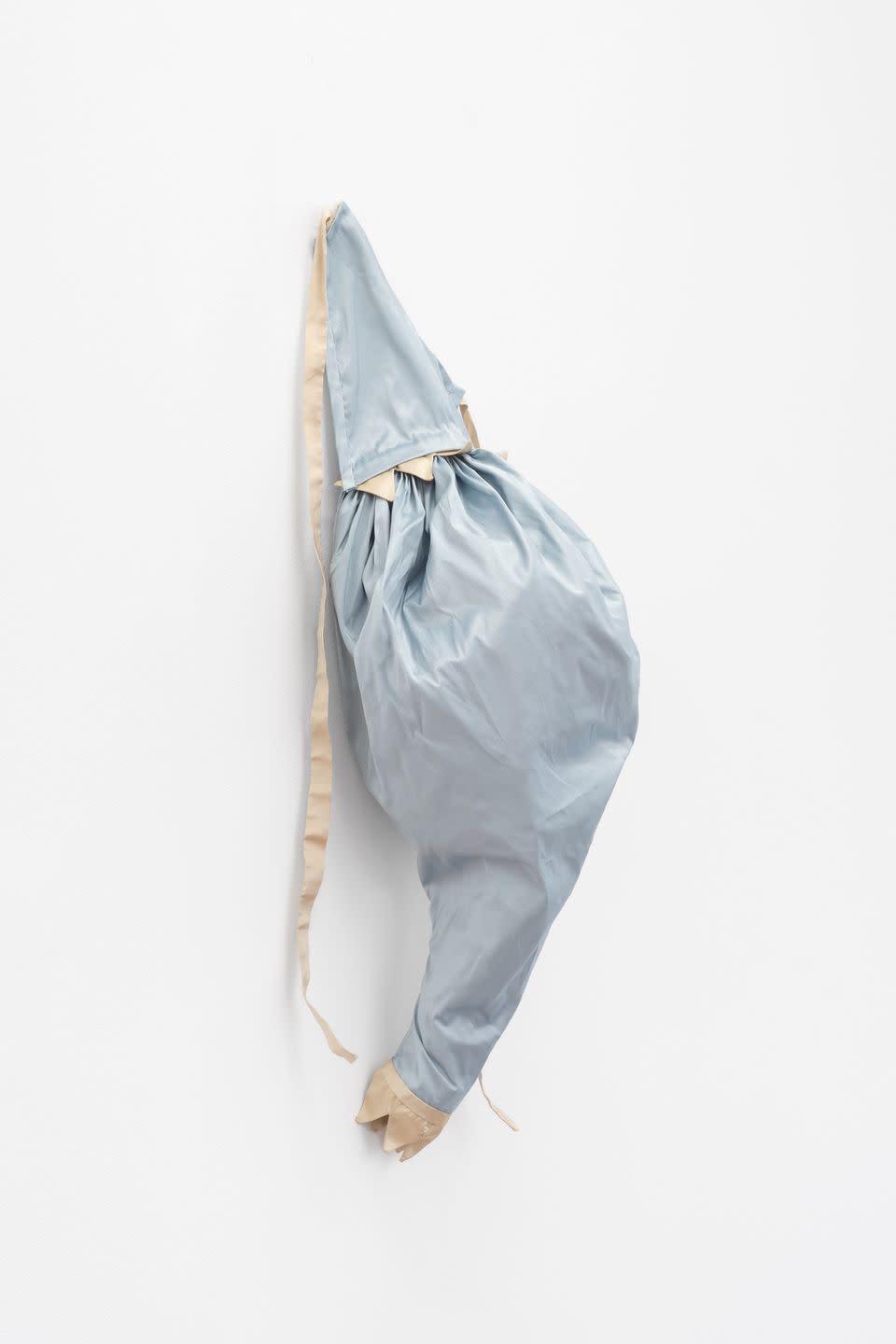
As the title suggests, “A Forged Spider’s Web” is a small and sensitive show about process curated by artist and weaver Anne Low. The time, commitment, and care that goes into a single object, some with a particular use, some without. On view are simple and exquisite works of art by artists, weavers, basketmakers, woodworkers, textile historians from Stockholm to Kyoto, Japan, to Vermont. A carefully constructed single gigot sleeve by New York–based historian and dressmaker Sarah Jean Culbreth in a pond blue silk shot with spiked cream trimming stands out as deeply poetic and appropriate for such a show. Also on view are handmade pins made in the manner described by Adam Smith in The Wealth of Nations, written in 1776, a single match by Zoë Sheehan Saldaña, and a curving hand-carved horse chestnut tray by Shingo Tsukuda. The connecting thread between all the work is the absence of a “modernized” alternative to making. A careful hand stitch cannot be replicated by machine, nor can a complex basket weave or a carefully applied layer of lacquer. The show is a gentle reminder of time and skill’s relation to luxury, with every piece of art gorgeous and straightforward in equal parts. On view through May 6. —C.O.
“Grand Central Treehouse” by Ficus Interfaith at Deli Gallery
New York City
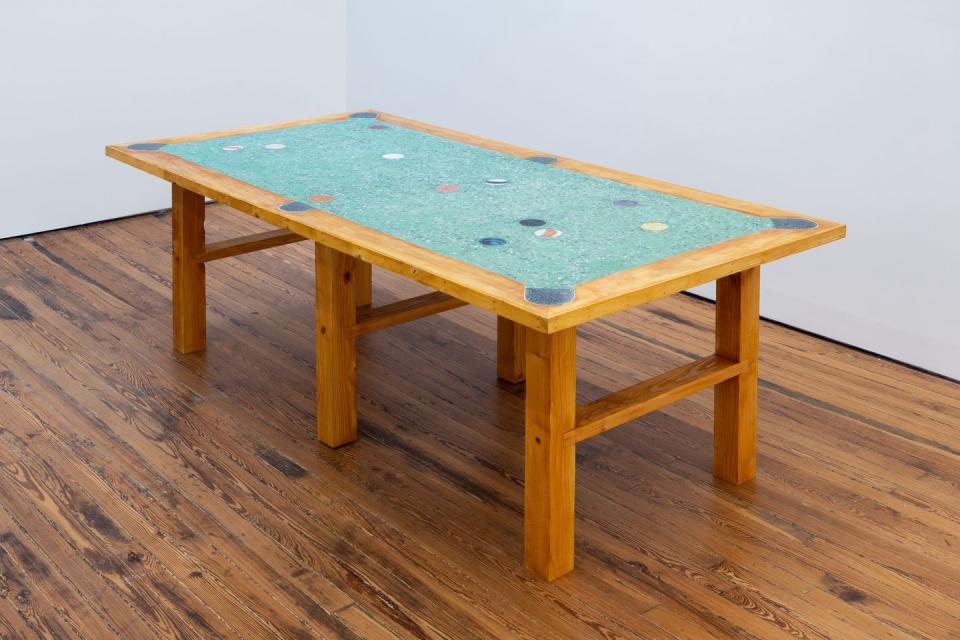
An exceptionally precise method of visual storytelling, mosaics have demanded more concentration and forethought than many craft traditions since ancient times. The basics remain the same—assemble enough properly colored miniscule pieces of stone to create one central decorative statement. The collaborative artist duo, Ficus Interfaith, have taken this multimillennia-old craft—specifically via terrazzo—and updated it with cheek and cheer. At their recently opened solo show with Deli Gallery, the pair presented several “paintings” of stone with skeletons, leaves, snakes, and butterflies in varying size, along with a terrazzo “pool table” with brass and zinc on a pine base, a swirly side table with deer bones, and a sculpture with an inset branch to charming effect. Take a stroll through their twisted twilight zone on view through May 6. —C.O.
You Might Also Like

